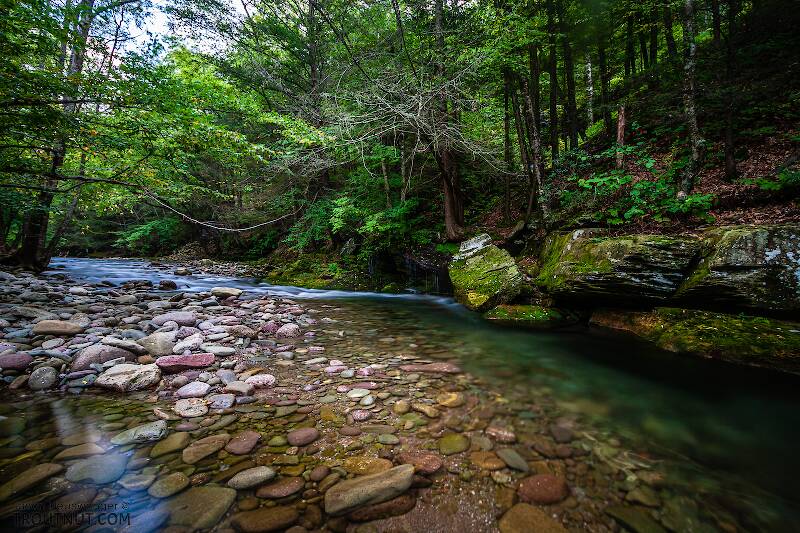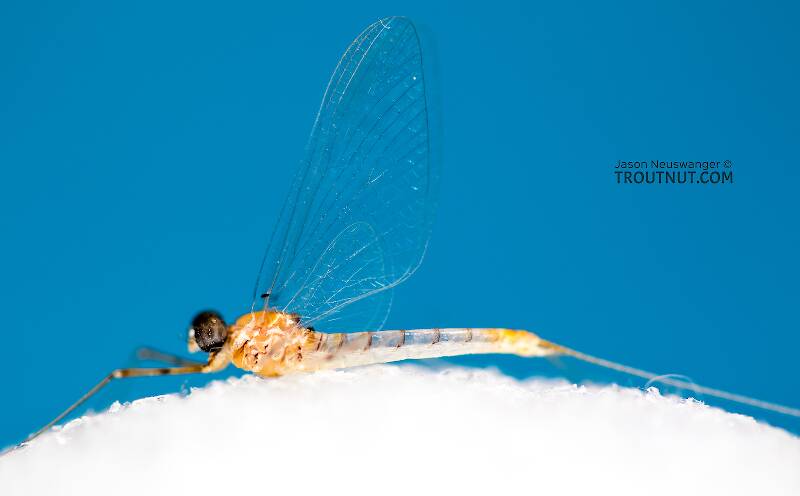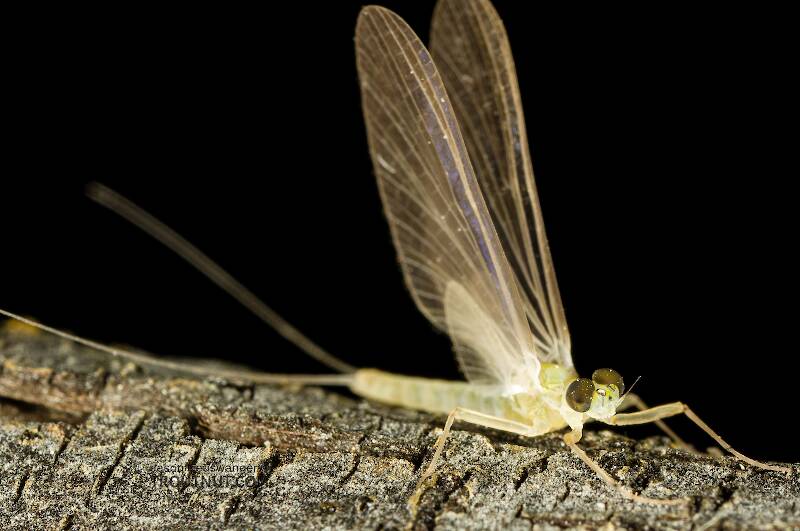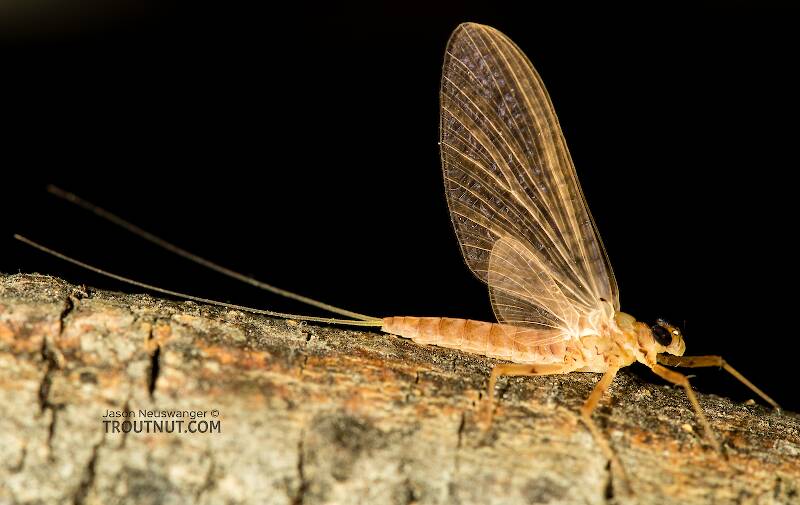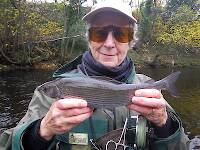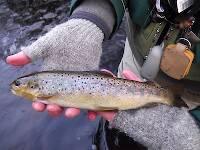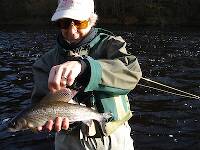
Hex Mayflies
Hexagenia limbata
The famous nocturnal Hex hatch of the Midwest (and a few other lucky locations) stirs to the surface mythically large brown trout that only touch streamers for the rest of the year.
Featured on the forum

Some characteristics from the microscope images for the tentative species id: The postero-lateral projections are found only on segment 9, not segment 8. Based on the key in Jacobus et al. (2014), it appears to key to Neoleptophlebia adoptiva or Neoleptophlebia heteronea, same as this specimen with pretty different abdominal markings. However, distinguishing between those calls for comparing the lengths of the second and third segment of the labial palp, and this one (like the other one) only seems to have two segments. So I'm stuck on them both. It's likely that the fact that they're immature nymphs stymies identification in some important way.

Troutnut is a project started in 2003 by salmonid ecologist Jason "Troutnut" Neuswanger to help anglers and
fly tyers unabashedly embrace the entomological side of the sport. Learn more about Troutnut or
support the project for an enhanced experience here.
This topic is about the Mayfly Genus Epeorus
There is remarkable variety of form and color within this prolific genus of fast-water mayflies. Different species are found across the country, and several cause good hatches. Fly anglers are likely to encounter the lesser species on occasion, too.The best Epeorus hatch in the East is Epeorus pleuralis, the famous Quill Gordon, the first abundant large mayfly hatch of the year. Epeorus vitreus comes a little later and is important in both the East and Midwest.
In the West, Epeorus longimanus dominates in fast, high-altitude streams, while Epeorus albertae inhabits slower and lower waters.
Example specimens
Troutnut on Oct 4, 2006October 4th, 2006, 7:51 am EDT
Thanks. Good catch. That must be a recent change, or at least recently added to the mayfly species list at Purdue.
I have one small thing on my programming to-do list before I can make the change, but I'll do it soon.
I have one small thing on my programming to-do list before I can make the change, but I'll do it soon.
Jason Neuswanger, Ph.D.
Troutnut and salmonid ecologist
Troutnut and salmonid ecologist
Troutnut on Oct 4, 2006October 4th, 2006, 8:12 am EDT
Thanks for compiling that list! It will be a big time-saver when I'm ready to update my taxa.
Jason Neuswanger, Ph.D.
Troutnut and salmonid ecologist
Troutnut and salmonid ecologist
Quick Reply
Related Discussions
Topic
Replies
Last Reply
0
Oct 24, 2006
by Troutnut
by Troutnut
12
Sep 24, 2010
by Oldredbarn
by Oldredbarn
Re: Review of "An Introduction to the Aquatic Insects of North America" 5th Edition by Merritt, Cummins, & Berg
In Site Updates by Troutnut
In Site Updates by Troutnut
4
Aug 19, 2020
by Crepuscular
by Crepuscular
3
Feb 12, 2009
by Creno
by Creno

